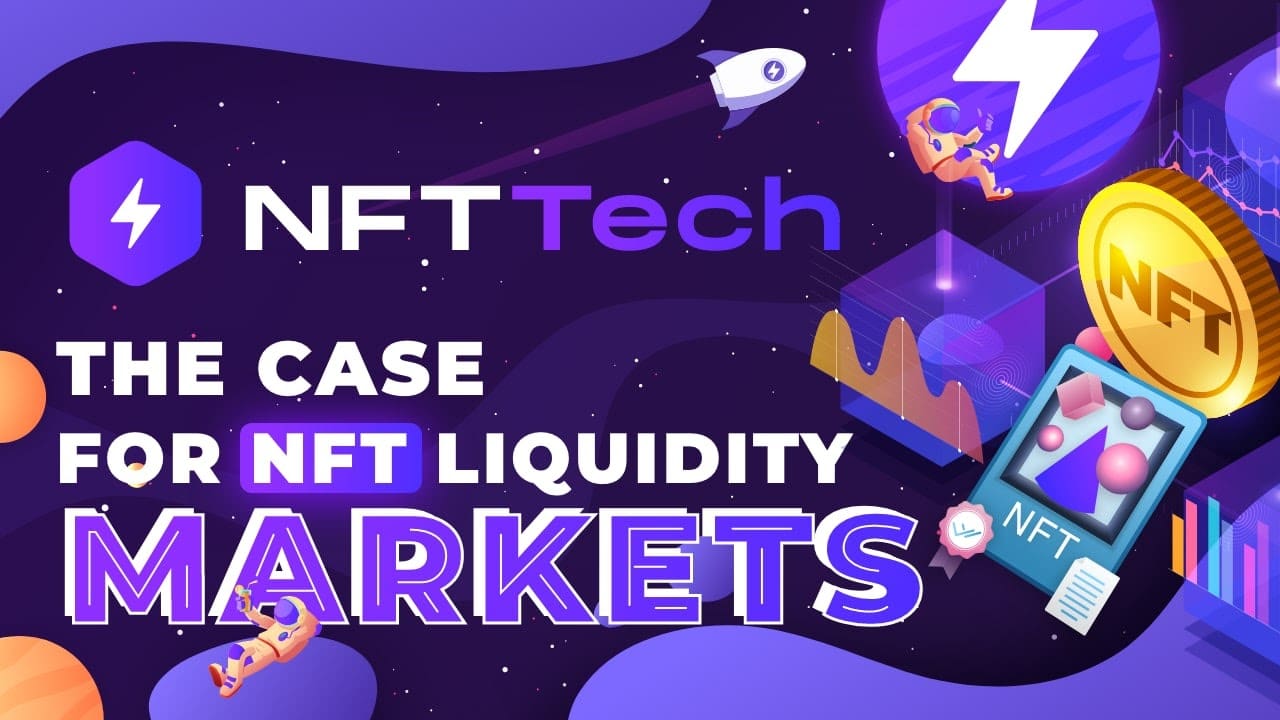NFTs are the latest crypto trend, actively attracting a lot of attention and money from artists, collectors, and investors. From Twitter’s CEO Jack Dorsey’s $2.9 million NFT to Beeple’s $69 Million artwork, NFTs are popping everywhere. While the interest in NFTs is exploding, there are some pressing issues that the NFT industry is facing, particularly the lack of liquidity and the opportunity to gain ROI on collected NFTs.
Can the NFT Space Overcome Liquidity Issues?
As NFTs are non-fungible assets, it is difficult for liquidity to exist because people don’t constantly trade them, at least not in pairs, as one would swap cryptocurrencies. Currently, the possibilities for trading these non-fungible tokens in the secondary market remain grim.
In the past, the ERC-20 (fungible assets) faced a similar hiccup, and most tokens took months to attain significant liquidity. However, the industry used smart contracts and crypto-economic mechanisms to address the liquidity dilemma, mainly through the genesis of Automated Market Makers (AMMs) and listings on centralized exchanges. In contrast, NFTs are non-fungible, and therefore values can be challenging to determine. But can the same crypto-economic principles financialize the NFT space? Thankfully, projects that propose sophisticated liquid marketplaces for NFTs are spawning.
Difficulty Reselling High-Priced NFTs
NFTs offer many advantages over the traditional marketplace, such as protection from duplication and the extension of royalties. Each NFT is tied to the blockchain that proves the authenticity and ownership of digital art. Plus, when the digital art is resold, the original author receives a percentage of each NFT sale. Thus, creators and artists from all the economic activity that happens downstream from the original sale. This way, authors get a more significant and deserving slice of the pie.
Buying and selling NFT, especially collectibles, is common. But when it comes to high-value NFT assets, including some of the collectibles, reselling is a significant challenge. It again boils down to the lack of liquidity. For instance, it is difficult for investors to trade one NFT to buy another. Because of the lack of liquidity, investors can’t easily flip NFTs for money. This elicits the question – can the NFT space sustain? In contrast, overflowing liquidity will result in quicker buying decisions from investors.
“No Guarantees” in NFT
Advertisement
After Beeple’s $69 million art piece, the NFT space has witnessed an influx of digital creators of all caliber hoping to find a similar spotlight. But it does not come that easy. New artists have to jump over a few stumbling blocks before they actually can drop their NFTs for sale.
Firstly, the aspect of understanding NFTs and how they work, unless they are already familiar with the crypto space. However, learning the inner workings of the NFT market is not a complex endeavor. The other problem is committing to a gas fee without knowing if the artwork will sell. Creators have to put the legwork into it by promoting their work on social media and actively participating in the community. But even then, there is no guarantee that the artwork will sell.
NFT Tech Comes To The Rescue
NFTs create an opportunity to provide a more fair payout mechanism for all digital content creators. In this equitable environment, creators can monetize their artwork easily and eliminate friction present in the traditional market. Many compare NFTs to the California Gold Rush for digital artwork. Witnessing the sudden rush of interest, many projects are popping up globally to address all the stumbling blocks in the nascent space, including the most significant pain point – the illiquidity of NFTs.
One such project is the NFT Tech, which strives to revolutionize the NFT industry. NFT Tech is planning to launch a zero-fee liquid marketplace to trade NFTs. The platform will promote “One-click NFT creation,” addressing the steep learning curve of NFT. It will also leverage cross-chain migration, which means creators and investors can transfer NFTs between the Ethereum network and Binance Smart Chain.
But its key highlight is the sophisticated “Liquid Matching Engine.” It solves the NFT industry’s fundamental pain point. It does this by turning an NFT into a liquid asset by assigning it a minimum value. The matching engine will guarantee liquidity towards the value. Deeper liquidity will attract more investors and allow existing investors to sell their NFT to buy another one easily. This way, investors can trade NFT as other liquid assets via the bid-order book. The Liquidity Matching Engine also opens the opportunity to sell NFTs into a secondary marketplace. Prices will be established by pooling data on price history and trading volume from several sources, a feat that is achieved by leveraging the world’s first NFT Oracle Solution, built by the Orion Protocol.
Furthermore, the project will be built in a manner that allows it to become the Amazon for NFTs, skilfully creating a user interface that facilitates one-click NFT purchases, auctions, and gallery-based displays. Ease of use is a core pillar of NFT Tech, thereby consumers may take advantage of feeless and seamless NFT minting, without needing to possess coding knowledge.
Advertisement
At the core of NFT Tech, we also observe the $NFTT token, an Ethereum-based ERC-20 utility coin providing significant benefits within the ecosystem.
Conclusion
NFTs are here to stay, and there is no coming back from the growing trend. It is already creating a whole new generation of creators and collectors of art. Many of the nascent technology spaces, the NFT industry does face some minor hurdles, such as illiquidity. All such issues will fade soon, taking into account the speed of technological innovations around NFTs. Especially with projects like the NFT Tech, these issues may soon become history. The NFT industry is only going to grow further to become the future of buying and selling arts in all its forms but will open the gates to blockchain-based authentication of numerous other asset classes.







